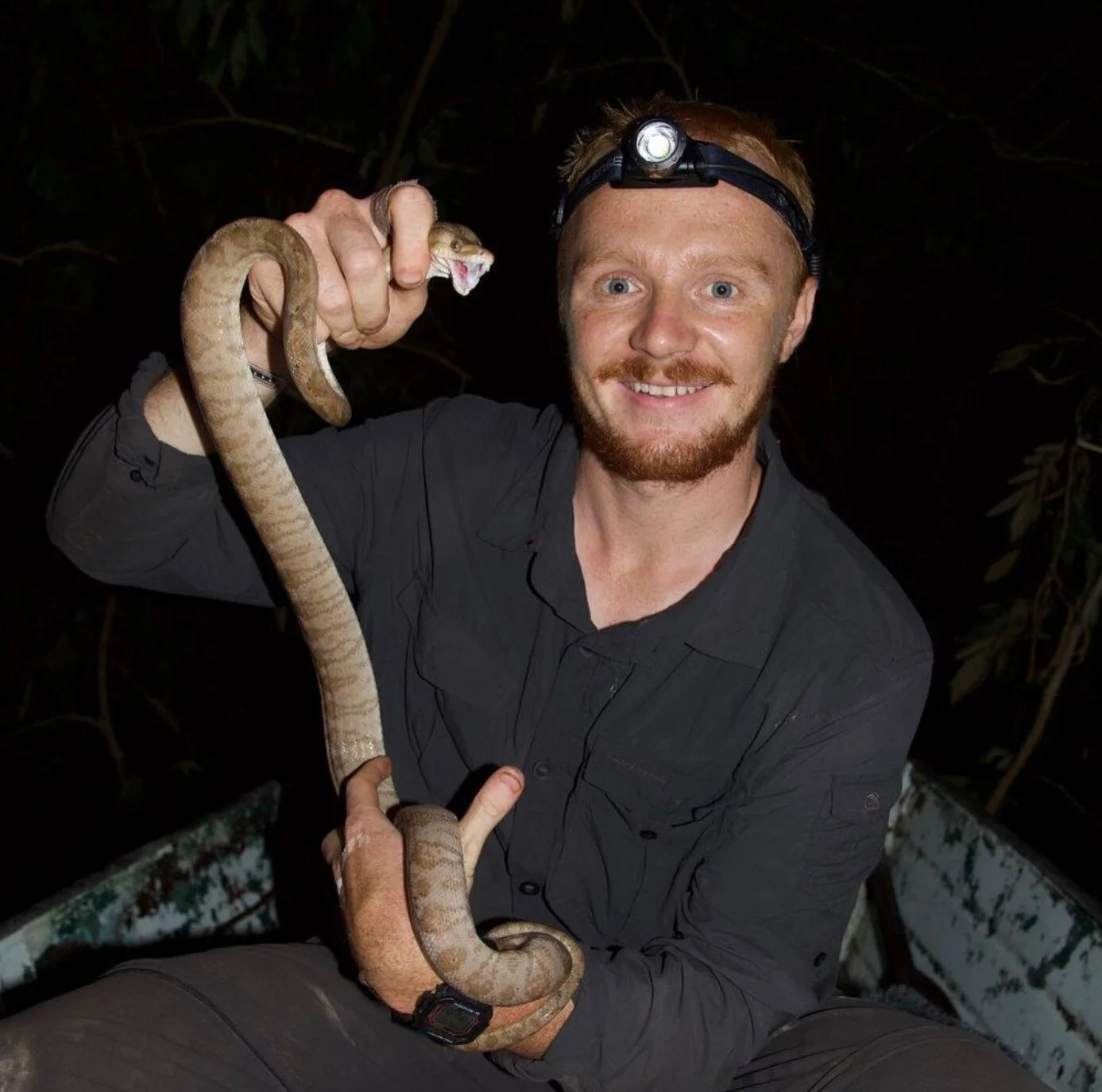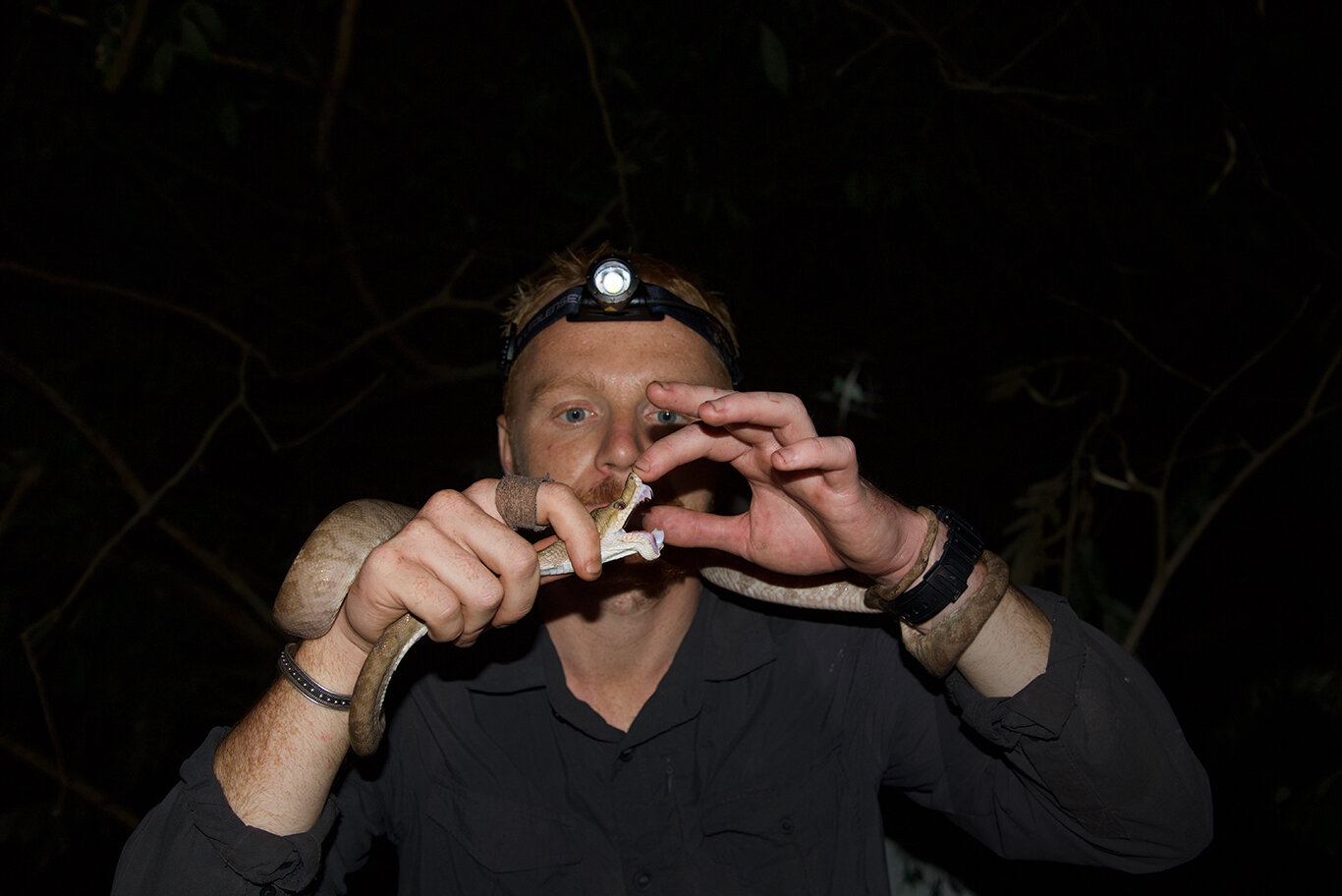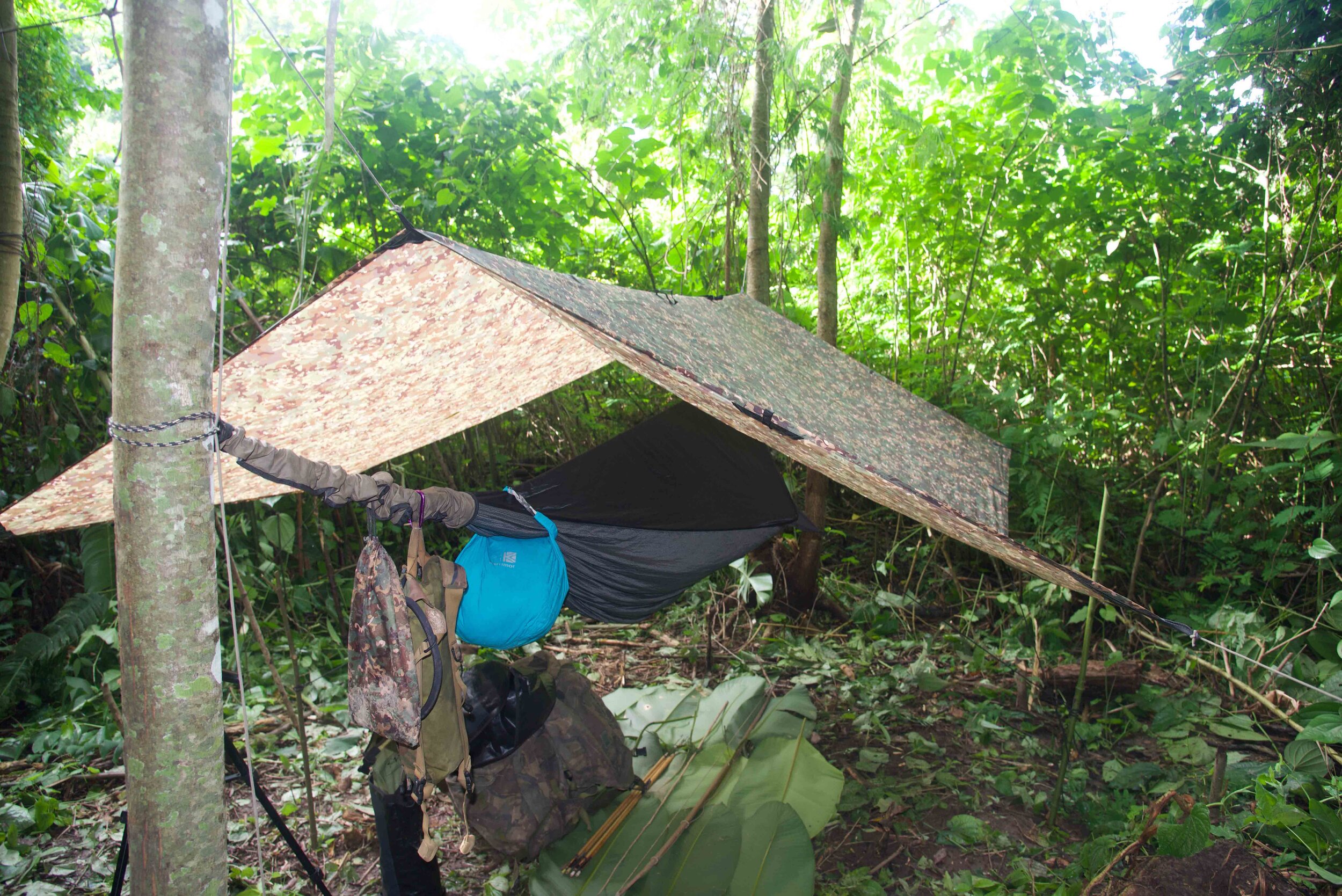Harrison Carter: Exploring the wilderness of Guyana, the least visited country in South America

Interview: Tom Warburton
From relocating deadly venomous snakes across Sri Lanka to tracking King Cobras through the mountainous jungles of Bali, Harrison Carter isn’t your normal London-based management consultant.
Harrisons passion for reptile conservation and outdoor adventure has taken him to some truly wild places including the South American country of Guyana.
Harrison Carter
Harrison has recently returned from a month-long expedition to Guyana in South America, the continents least-travelled country.
“I went in the search of exotic reptiles that have fascinated me since childhood; Green Anaconda, Bushmaster & Fer De Lance to name but a few”.
Dure magazine has caught up with Harrison to share some of his conservation adventures.
What first attracted you to the jungle and particularly jungle conservation?
I think I’ve always had a fascination with Jungle environments, my earliest memory is probably watching ‘The Jungle Book’ as a child and telling my parents I was going to live somewhere similar with massive snakes; as a compromise, we named my first dog ‘Bagheera’.
As the years went by and my passion for reptile conservation grew, the opportunity to visit and work in jungle environments became a reality.
Having now visited jungles on four different continents, I can say with confidence that they are all different, all require specialist knowledge and each has their special secrets.
That’s why their conservation is so important, leaving habitat loss aside, we are losing diversity in our jungles and we can’t treat them as one and the same.
How does an amateur end up being able to survive in some of the worlds' most hostile environments?
Put simply, preparation and local knowledge. Without diving into the definition of a ‘hostile environment’, even a Mediterranean beach can be hostile without the right preparation (sun cream) and local knowledge (nearest store). Now, imagine that beach is 3 or 4 days away from civilisation and you don’t have anyone to turn to when things go wrong.
From experience, whilst it’s important to really think about the different situations you could find yourself in and pack the right kit, but the real ticker is local knowledge.
Local knowledge is second to none when things inevitably go wrong in hostile environments, whether it's picking the right local plant to eat, knowing the nearest doctor or way to behave in confrontational interactions – local knowledge can be the difference between life and death.
Having a get out of jail free card is essential if you want to venture into the unknown, but so is sun cream; as a red-headed guy, I never forget sun cream.
You've talked about the jungle being your home environment, what's the most important thing in order to thrive in the jungle?
Leaving the kit to the side for now, you need to have a really strong ‘why’ to thrive in the Jungle. Contrary to Mowgli’s tale in The Jungle Book, these environments are unforgiving, brutal and without question there to consume anyone not prepared to do the hard yards.
Walking in 26 degrees at near 100% humidity without food and 5 litres of iodine riddled water to drink, only the strongest of causes will see you through.
For me, honestly, the environmental/dietary challenges are manageable when compared with the potential excitement of seeing elusive animals that have been living in my mind for months or years prior.
On my recent trip to Guyana, I heard a tale about a 70-year-old British chap who travels into the jungle for a month each year to see a Jaguar in its natural habitat. He takes a team of locals with him to manage camp and doesn’t move from base to base, he simply waits in the pure hope of seeing the country’s most elusive predator.
Painfully still unsuccessful, his story is a perfect example of what most important to survive in the jungle. Whilst muscles, fitness and kit help, without a strong ‘why’ you won’t last long in the jungle and if you do, you probably won’t enjoy it; a far worse outcome in my opinion.
Guyana, in South America
You've recently come back from Guyana, where you spent time in the jungle and working with local species, can you tell us a little about that?
I spent 1 month travelling along the North East to South West passage of Guyana, traversing the mighty Essequibo River, jungles and endless Savannah lands that just swallow the horizon.
The point of the trip was twofold:
1) To celebrate the conclusion of my Undergraduate Degree with my good mate Will
2) To spend time in the Amazon, learning about South America’s least touched jungle, and hopefully find some pretty cool reptiles along the way.
The first two weeks of the trip was fairly relaxed, more of the celebration, as I took Will on a rapid-fire trip of the country and his first in the tropics. Being the rainy season, travelling by road wasn’t a possibility and we hired a combination of planes/boats/4X4s to hop between research centres and private accommodations where available.
However, with a roof over your head every night and cooked food available twice a day, it’s easy to forget you are still in a jungle environment and the realities of being exposed to 100% humidity/26-degree heat caught up with Will like a lightning strike.
Jungle environments are all about prevention, often anal prevention (thankfully figurative), but think my constant nagging to powder feet/address cuts with iodine drove Will slightly mad.
Ultimately, Will’s feet started to suffer and developed deep cracks in his heels as he approached the end of his two-week stint on the trip. After seeing Will on the plane back to LDN Heathrow, I faced the most exciting and definitely most challenging part of the trip, an unsupported 14-day trek through the heart of Guyana’s untouched jungle.
Sitting in my shabby hotel in Guyana’s capital, Georgetown, I was absolutely itching to get back into the field but no one told me I’d have to co-pilot the 4-person plane through heavy rain. With an ironic fear of flying, the 3 hr flight into a small mud landing strip was a fairly stressful experience but pretty incredible at the same time.
Having passed this village on my previous trip with Will, I was greeted by the local chief with hugs and a bottle of El Dorado 5-year rum; the local currency. With a mild hangover and vague memories of dancing to Bob Marley a few hours earlier, I set off into the jungle at 6 am to get ahead of the sun alongside Harry & Damien (our local Amerindian guides) and a German photographer called Thomas.
The next 13 days presented stories I’ll tell for the rest of my life, and far too many to throw in text. The truth is, my best tales aren’t wrestling Jaguars and waking next to a Goliath bird Eating tarantula (there’s always next time), but our first night in the hammock, the day it didn’t stop raining and the day I nearly killed Thomas out of sheer frustration for destroying our shelter.
So, to go back to the question, can you tell us about your trip to the Jungle? Oh yeah, but I’ll need some more space to get into the detail – maybe a book is on the cards.
Reptile conservation is certainly something that many people would be scared of, why is it so important to look after these species and what type of threats do they face?
Reptiles play a vital part in the ecosystem, whether you apply a macro or microlens to the situation. They are a valuable food source for almost any predator in their younger years, generally weak/small/without parental protection, but once adulthood is reached snakes commonly focus their dietary attention on rodents and provide effective pest control as result; species dependant.
Taking a targeted case study, snakes play a vital role in controlling the spread of disease in developing countries; villages/towns/cities.
Through my experience, I’ve seen developing countries really struggle to implement effective waste management systems, and locals often end up with large piles of rubbish outside their residence. This rubbish attracts scavengers, often rodents, and increase the chance of community-wide disease taking control in areas without a healthy provision of medical support.
Thankfully, the smell of rodents also attract snakes who naturally predate on these rodents to control numbers, limit the spread of disease as a result and ultimately provide a net positive impact for human settlements.
Yes, there are a number of human fatalities caused by venomous snake bites each year, but the increasing presence of NGO/charity/public figure support for locals helps mitigate unwanted interactions and I hope will drive down this fatality number over time.
Of course, the provision of affordable anti-venom would be the big catalyst for change to fatality numbers in developing countries, but this world crisis is probably one to pick another time.
What's the most important bit of kit you bring with you into the jungle?
There are a few items that wrestle for the top spot (iodine/fishing line/hammock), but a trusty machete is the most important piece of kit for me. It gives you the ability to create fire, enjoy dry clothes, purify water and catch/butcher food - not to mention the ability to walk about 4 meters without a cut.
Other notable mentions would include, camelback (water is vital), top quality hammock with mozzie proof lining and a small journal to capture the beauty amongst the chaos that surrounds.
I can imagine navigating in the jungle can be incredibly difficult, how do you find your way around?
Before you head into the jungle, the assumption is satellite/drone maps would be the most effective cause for navigation alongside a strong compass game. Whilst valuable, especially the compass game, I found the realities of day to day travel revolved around natural highways – the rivers.
Walking next to the river can be uncomfortable underfoot and unnecessarily wet, but getting lost is one of the top reasons for human fatality in these environments and it's shockingly easy to happen running on an empty tummy without a healthy supply of freshwater.
Of course, I don’t think any adventurer would say they navigated the jungle without the help of local advice, I was no different. Harry and Damien have been hunting in the deep Guyanese jungle for catfish/piranha and laba (similar to the capybara) and developed a connection with the land stronger than any 4G phone signal.
My advice, be prepared to find your own way, but do your best to get some local knowledge onboard your adventure team. Not only will it save you time, but it’s also generally a great laugh and chance to learn more about different cultures; the whole point of travel in my mind.
You saw some pretty cool wildlife whilst in Guyana, what stands out?
As a reptile nerd, there is no question that I went into the jungle to find venomous snakes, big constrictors and the mighty caiman that police Guyana’s waterways. Despite the rainy season, which is the worst time of the year for animal spotting, I feel very lucky to have found and enjoyed interactions with a number of wonderful reptiles:
- Over 20 Amazon Tree Boas; variety of colours.
- Fer De Lance, a juvenile; the deadliest snake in South America.
- Green Anaconda, a baby; heaviest bodies snake on planet earth.
- Coral Snake, an adult.
- Over 10 Black Caiman; the largest Caiman Species in the world.
- Cuviers Dwarf Caiman, an adult.
- Smooth Fronted Caiman, a juvenile.
However, there are no scales on the animal that hit me hardest in the moment. South America’s most powerful bird, I was lucky enough to follow a juvenile Harpy Eagle as it moved from tree to tree down the river; likely in search of a nice howler monkey for lunch.
The interaction came after a couple of days of rain and hardly any animal sightings, but seeing this beautiful creature grace the small view of the sky above really made my day and re-invigorated our search for the reptiles that pulled me to Guyana.
Harrison Carter
You've now been to several jungles and environments, what stands out?
I was in a reptile store in London a few years ago, talking to the owner about jungle environments as a budding traveller and distinctly remember his assessment of my favourite environment, “jungles, once you’ve seen one you’ve seen them all”.
Having now had the fortune to visit jungles across the world a few years later, the one thing that stands out for me are the indisputable differences.
Jungles differ in terrain, altitude, and natural resources. Whilst I’ve found commonality across temperature and humidity (within reason), the flora and fauna are almost unrecognizable from jungle to jungle.
Of course, the trick with jungle survival and enjoyment lies in the details.
The specific trees you go to for the sap that burns like a firelighter or the tree with bark-like rope to build your jungle structure, these details change jungle on jungle and shift the experience as a result.
You don’t have to go that far to see these difference as well, even Harry and Damien admitted they would need help navigating and hunting in a Venezuelan or Peruvian Jungle despite being absolute experts in Guyanese conditions; just a few hundred kilometres east.
For me that’s the beauty, it keeps the challenge fresh and the adventure true time after time.






